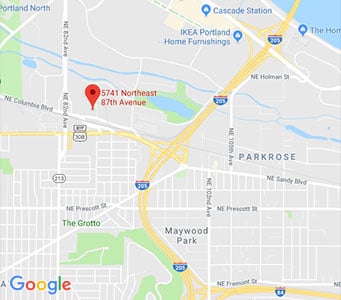Ride Necessities
Happy riding starts with careful preparation. It's hard to enjoy a long day on open roads when, in the back of your mind, you worry that the slightest mishap could leave you stranded. In general, cyclists travel light, but that doesn't mean leaving essential tools, clothes and food at home. A few essential items can prevent a minor mechanical issue or unexpected bad weather from derailing your ride.
Saddle Bags
Finding a reliable way to carry your extra gear is key to ride preparation. A saddle bag should be just big enough to hold the essentials, and maybe have a bit of extra room to slip in a map or extra food. Saddle bags vary in size and often can be attached to your seat with straps or a quick release bracket.
If you're a fast recreational rider or racer, look for a smaller bag with just enough room for an extra tube, CO2 cartridge and inflator, a tire lever or two and a multi-tool—all the essentials, but won't weigh you down on your group ride.
Recreational or touring riders may find a larger pack more suited to their needs, with room for a repair kit, a map, a snack and maybe even a wind vest. There are even packs that attach to your saddle using a convenient quick release clamp for effortless on and off.
Flat Kits
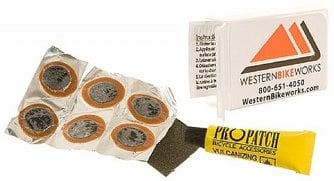 Flat tires are the most common mishap on the road; any experienced cyclist has had to do their fair share of on-the-fly tire repair. In your repair kit, you will need at minimum an extra tube, an inflator, and a tire lever or two. Many lightweight tubes fold up small enough to easily fit in a jersey pocket.
Flat tires are the most common mishap on the road; any experienced cyclist has had to do their fair share of on-the-fly tire repair. In your repair kit, you will need at minimum an extra tube, an inflator, and a tire lever or two. Many lightweight tubes fold up small enough to easily fit in a jersey pocket.

There are a wide range of pumps and CO2 devices that will give you air on the road. Pumps vary from compact hand pumps to creative fold-out designs that mimic floor pumps for better leverage and higher pressure. A traditional frame pump is a great way to ensure a rideable tire pressure in your repaired tire, and it attaches to your frame so it's always there when you need it. Even a small hand pump will get enough air in your tire to get home on.
A CO2 inflator is a faster way to inflate a tire to rideable pressure. Inflators vary from simple, tiny, super-lightweight attachments to more elaborate trigger-controlled pieces for precise inflation control. Some use a threaded CO2 cartridge and others use a threadless CO2 catridge. One 16 gram cartridge will easily fill a road or MTB tire to a rideable pressure. That said, if you carry only a CO2 inflator (no pump), we advise you to carry at least two cartridges. Even with inflators that appear to reseal the cartridge, cartridges lose pressure in a matter of minutes after their seal is broken, and if you get another flat or find another puncture, you'll be out of luck without another one.
No roadside repair kit is complete without a patch kit, which allows for simple on-the-go tube repair. A patched tube really is as good as new, and many recreational riders will use the same tube over and over again until it's more patch than rubber! Glueless patches are extra convenient and quick. In addition, a tire boot is always useful in the event of major tire damage, though a power bar wrapper or dollar bill will work in a pinch. A couple tire levers will help ease those stubborn tires off your rim.
Multi-Tools
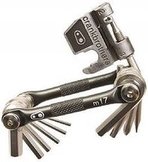 In the event of a true mechanical emergency, a good multi-tool is often the difference between riding home and hitch-hiking. A good multi-tool will have a selection of Allen wrenches, screwdrivers, and, ideally, a chain tool. A chain malfunction without a chain tool is a quick way to find out that your cycling shoes aren't made for walking. While a chain tool may not get everyday use, having it for that one emergency will be worth all those days of carrying it around. A solid, small multi-tool will not set you back too much in terms of cost or weight.
In the event of a true mechanical emergency, a good multi-tool is often the difference between riding home and hitch-hiking. A good multi-tool will have a selection of Allen wrenches, screwdrivers, and, ideally, a chain tool. A chain malfunction without a chain tool is a quick way to find out that your cycling shoes aren't made for walking. While a chain tool may not get everyday use, having it for that one emergency will be worth all those days of carrying it around. A solid, small multi-tool will not set you back too much in terms of cost or weight.

Wind Vests
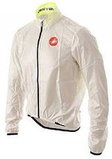 Whether it fits in a pocket or pack, a wind vest is indispensable, especially in springtime when a cold breeze can quickly take the fun out of a ride. Compact, packable vests can easily be stored in a jersey pocket and provide plenty of protection from a cool breeze. For potentially cooler weather, lightweight jackets utilize space-age fabric to provide breathability, weather resistance and amazingly light weight. If precipitation is on the horizon, consider a waterproof rain jacket. They vary from inexpensive but not particularly breathable or lightweight options to high-tech, breathable jackets that are comfortable for all-day wear and will keep you going in any weather. Many of us keep rain protection around just in case sunny weather forecasts take a turn for the worse.
Whether it fits in a pocket or pack, a wind vest is indispensable, especially in springtime when a cold breeze can quickly take the fun out of a ride. Compact, packable vests can easily be stored in a jersey pocket and provide plenty of protection from a cool breeze. For potentially cooler weather, lightweight jackets utilize space-age fabric to provide breathability, weather resistance and amazingly light weight. If precipitation is on the horizon, consider a waterproof rain jacket. They vary from inexpensive but not particularly breathable or lightweight options to high-tech, breathable jackets that are comfortable for all-day wear and will keep you going in any weather. Many of us keep rain protection around just in case sunny weather forecasts take a turn for the worse.

Food
Nothing is longer than the ride home after "bonking," when your glycogen stores have been depleted. Most experienced cyclists can recall a few times, towards the end of long rides, when they simply could not generate the strength needed to push the pedals. While an extra gel or two won't completely ward off the "bonk," it will ease the pain as you limp home. Individually packaged gels, chews, and bars easily fit in your saddle-bag. It's always good to carry a little more food than you think you'll need.
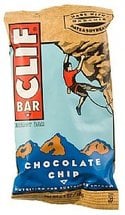
Having a recovery drink waiting at the car can help kick-start your recovery.
Flat kit, multi-tool, jacket, food. Four essential items to take with you whether the ride you've got planned is 10 miles or 100 miles. After a bit of practice, carrying these items will be second nature and take up very little room. Ideally, a flat kit will fit in your saddle bag, food in one jersey pocket, jacket in another, leaving the third to store your cell phone, ID and a little $$ for a coffee stop. Being prepared on the road doesn't have to weigh you down.




